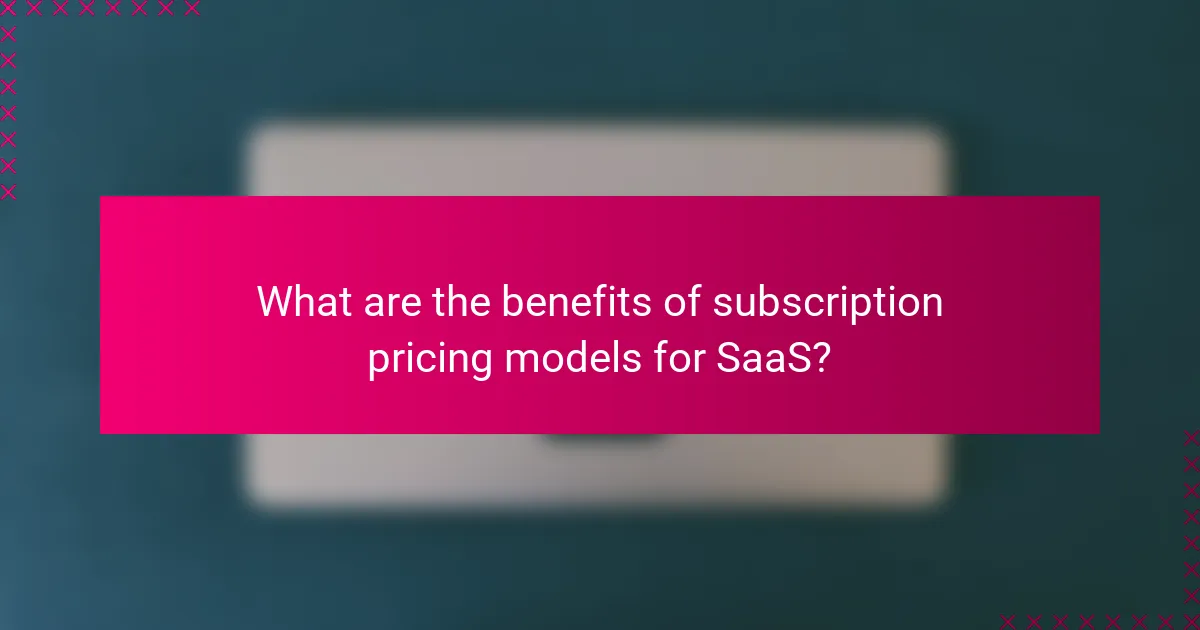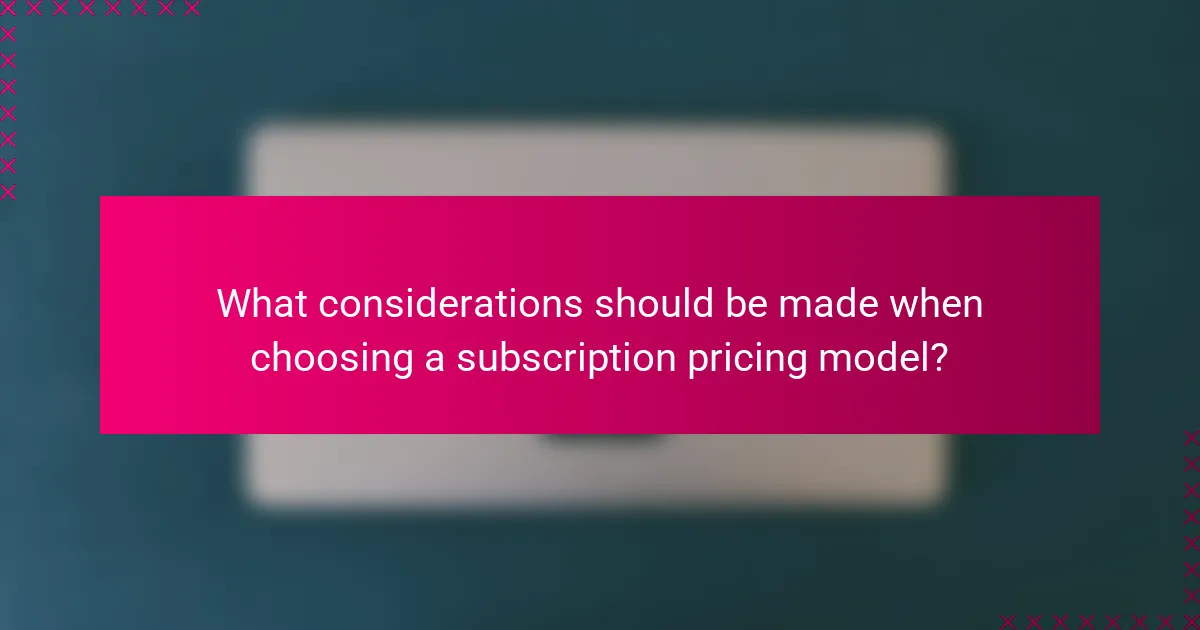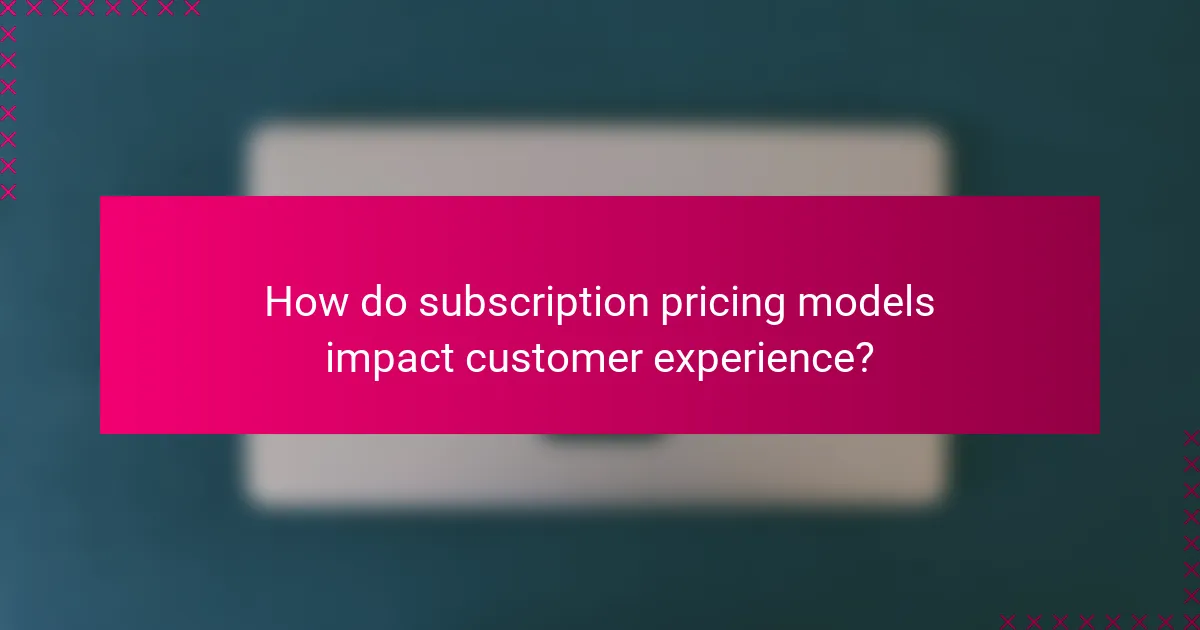Subscription pricing models have become increasingly popular in the UK, offering businesses a variety of options to meet diverse customer needs. From flat-rate to tiered and usage-based models, each type presents distinct benefits and considerations that can enhance customer loyalty and revenue predictability. Understanding your target audience and market dynamics is crucial for selecting the most effective pricing strategy to ensure long-term success.

What are the subscription pricing models available in the UK?
In the UK, various subscription pricing models cater to different business needs and customer preferences. These models include flat-rate, tiered, usage-based, freemium, and pay-as-you-go pricing, each offering unique advantages and considerations for both businesses and consumers.
Flat-rate pricing
Flat-rate pricing involves charging a single, fixed fee for access to a product or service over a specified period. This model is straightforward and easy for customers to understand, making budgeting simple. For example, a streaming service might charge £9.99 per month for unlimited access to its library.
While flat-rate pricing can attract a broad customer base, it may not maximize revenue potential for businesses if usage varies significantly among customers. Companies should consider their audience’s consumption patterns when adopting this model.
Tiered pricing
Tiered pricing offers multiple subscription levels at different price points, each providing varying features or usage limits. This model allows businesses to cater to diverse customer needs and budgets. For instance, a software provider might offer three tiers: basic at £5, standard at £15, and premium at £30 per month.
Tiered pricing can increase customer acquisition by appealing to a wider audience. However, businesses must clearly communicate the differences between tiers to avoid customer confusion and ensure they choose the right plan.
Usage-based pricing
Usage-based pricing charges customers based on their actual consumption of a service, making it ideal for products with variable usage patterns. For example, a cloud storage provider might charge £0.10 per GB stored per month. This model can be cost-effective for customers who use the service sporadically.
While usage-based pricing can attract price-sensitive customers, it may lead to unpredictable costs. Businesses should provide tools for customers to monitor their usage to enhance transparency and satisfaction.
Freemium model
The freemium model offers basic services for free while charging for premium features or enhanced functionality. This approach can help businesses build a large user base quickly. For example, a mobile app might be free to download but charge £4.99 for additional features.
While the freemium model can drive initial engagement, converting free users to paying customers can be challenging. Companies should focus on delivering significant value in the premium offerings to encourage upgrades.
Pay-as-you-go pricing
Pay-as-you-go pricing allows customers to pay only for what they use, similar to a prepaid mobile plan. This model is flexible and can be appealing to customers who prefer not to commit to a subscription. For example, a gym might charge £10 per visit instead of a monthly membership fee.
This pricing model can attract customers who are hesitant to commit long-term. However, businesses must ensure that the pricing structure is clear and competitive to avoid losing potential customers to subscription-based alternatives.

What are the benefits of subscription pricing models for SaaS?
Subscription pricing models for Software as a Service (SaaS) offer several advantages, including consistent revenue generation and improved customer loyalty. These models allow businesses to predict income and foster long-term relationships with users, which can lead to increased profitability.
Predictable revenue streams
One of the main benefits of subscription pricing is the creation of predictable revenue streams. Businesses can forecast their income based on the number of active subscribers, which helps with budgeting and financial planning. This stability is particularly valuable for startups and small companies looking to establish themselves in competitive markets.
For example, a SaaS company charging $50 per month for 100 subscribers can expect a steady revenue of $5,000 each month. This predictability allows for better resource allocation and investment in growth initiatives.
Enhanced customer retention
Subscription models often lead to enhanced customer retention, as they encourage ongoing engagement with the service. Customers who commit to a subscription are more likely to develop a habit of using the software, which can reduce churn rates. This loyalty is crucial for long-term success.
To further boost retention, companies can implement strategies such as regular updates, personalized communication, and loyalty rewards. These tactics help maintain customer interest and satisfaction, ensuring they continue their subscriptions.
Scalability for businesses
Subscription pricing models provide scalability, allowing businesses to grow their customer base without a proportional increase in costs. As more users subscribe, the marginal cost of serving each additional customer typically decreases, improving overall profitability.
For instance, a cloud-based service can accommodate thousands of users with minimal additional infrastructure investment. This scalability is essential for SaaS companies aiming to expand rapidly while maintaining service quality.
Lower customer acquisition costs
Adopting a subscription pricing model can lead to lower customer acquisition costs (CAC). Instead of making a significant upfront investment to attract customers, businesses can spread costs over time through subscription fees. This approach can make it easier to attract new users who may be hesitant to commit to a large one-time payment.
Offering free trials or tiered pricing can further reduce CAC by allowing potential customers to experience the service before making a financial commitment. This strategy can effectively convert leads into paying subscribers while minimizing initial costs.

What considerations should be made when choosing a subscription pricing model?
When selecting a subscription pricing model, it’s essential to evaluate factors such as your target audience, market competition, and cost structure. These considerations will help ensure that your pricing strategy aligns with customer expectations and business sustainability.
Target audience analysis
Understanding your target audience is crucial for choosing an effective subscription pricing model. Analyze demographics, purchasing behavior, and preferences to determine what price points are acceptable. For instance, younger audiences may prefer lower-cost options, while professionals might be willing to pay more for premium features.
Conduct surveys or focus groups to gather insights on what your audience values most in a subscription service. This information can guide you in structuring your offerings, such as tiered pricing or bundled services, to meet their needs.
Market competition assessment
Assessing your market competition helps you position your subscription pricing effectively. Research competitors’ pricing models, features, and customer feedback to identify gaps or opportunities. For example, if competitors offer similar services at a lower price, you may need to justify a higher price with added value or unique features.
Consider using a competitive analysis table to compare your offerings against those of key competitors. This can help you visualize where you stand in terms of pricing and features, allowing you to make informed adjustments.
Cost structure evaluation
A thorough evaluation of your cost structure is vital when determining subscription pricing. Calculate fixed and variable costs associated with delivering your service, including production, marketing, and customer support. Understanding these costs will help you set a price that covers expenses while remaining attractive to customers.
It’s advisable to establish a pricing model that allows for scalability. For example, if your costs decrease with increased subscriber numbers, consider implementing a tiered pricing strategy that rewards long-term subscribers with lower rates. This approach can enhance customer loyalty while ensuring profitability.

How do subscription pricing models impact customer experience?
Subscription pricing models significantly influence customer experience by shaping how users interact with products and services. These models can enhance satisfaction through flexibility, perceived value, and expectations for support, ultimately affecting retention and loyalty.
Flexibility in usage
Subscription pricing offers customers the flexibility to use services as needed without long-term commitments. This model allows users to scale their usage up or down, adapting to changing needs without incurring penalties. For instance, a software subscription may allow users to pay monthly, enabling them to cancel if their requirements diminish.
However, businesses must balance flexibility with pricing structures to avoid overwhelming customers with choices. Clear communication about usage limits and potential fees for exceeding them is essential to maintain a positive experience.
Value perception
Customers often perceive subscription pricing as providing better value, especially when compared to one-time purchases. This perception is enhanced by the ability to access a wide range of features for a fixed monthly or annual fee, making it easier for users to justify their spending. For example, streaming services offer extensive libraries of content for a relatively low monthly cost.
To maximize value perception, companies should regularly update their offerings and communicate these enhancements to subscribers. Highlighting new features or exclusive content can reinforce the idea that the subscription is worth the investment.
Customer support expectations
With subscription models, customers typically expect robust support as part of their ongoing relationship with the service provider. This expectation can lead to higher satisfaction if support is responsive and effective, as users feel their investment is being valued. For instance, tech companies often provide dedicated support channels for subscribers, enhancing their overall experience.
Businesses should ensure that customer support is easily accessible and well-trained to handle subscription-related inquiries. Regular feedback from users can help identify areas for improvement and ensure that support meets customer expectations consistently.

What are the challenges of implementing subscription pricing models?
Implementing subscription pricing models can present several challenges, including customer resistance, operational complexities, and the need for clear value communication. Businesses must navigate these issues to successfully transition to or maintain a subscription-based approach.
Customer resistance to change
Many customers are accustomed to traditional purchasing methods and may resist switching to a subscription model. This resistance can stem from concerns about long-term commitments, perceived loss of control, or uncertainty regarding the value of ongoing payments.
To address customer resistance, companies should clearly communicate the benefits of subscription pricing, such as convenience, cost savings, and exclusive access to products or services. Providing flexible subscription options, like trial periods or easy cancellation policies, can also help ease customer apprehension.
Engaging customers through feedback and testimonials can further mitigate resistance. Highlighting positive experiences from other subscribers can build trust and demonstrate the value of the subscription model, making it more appealing to potential users.
